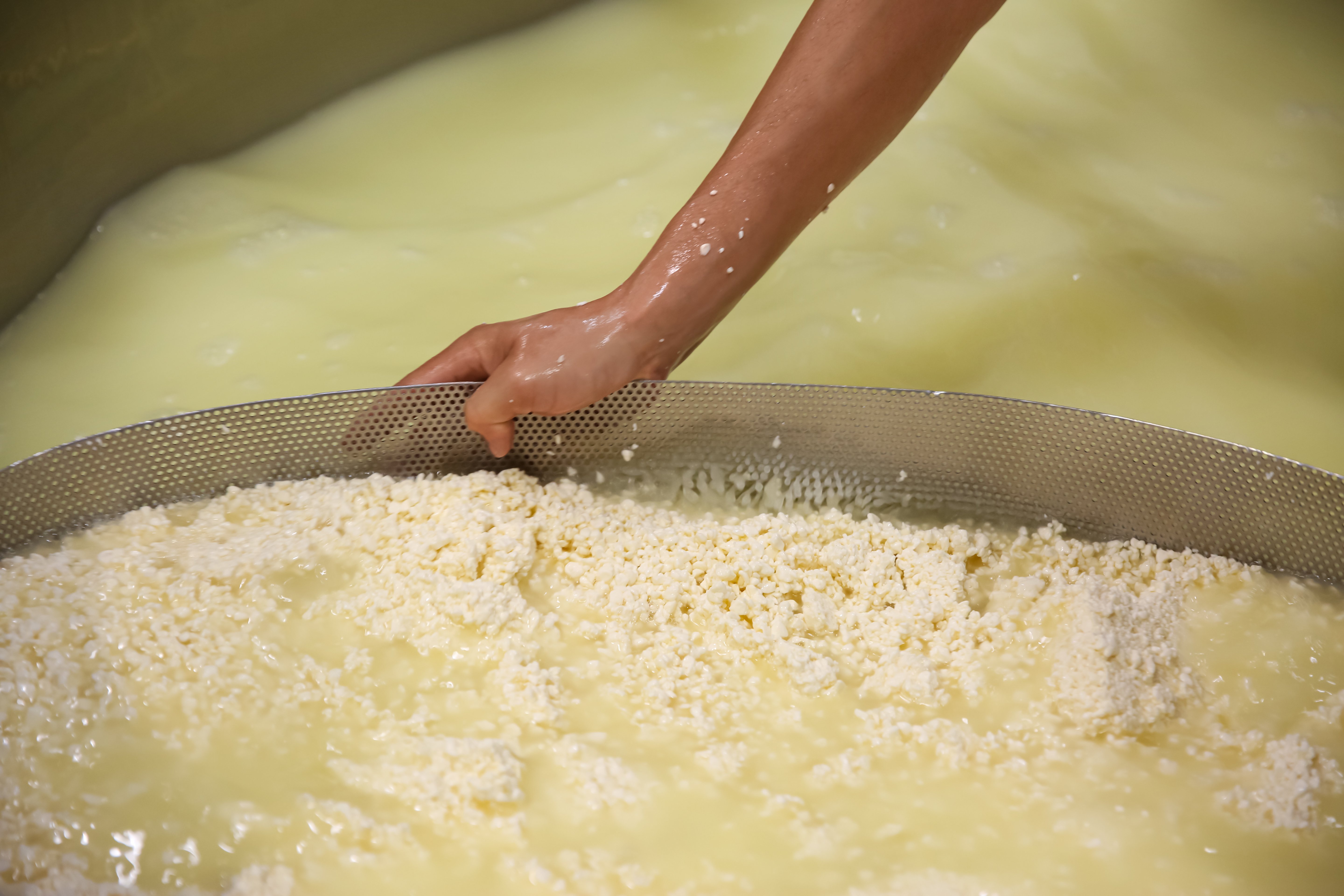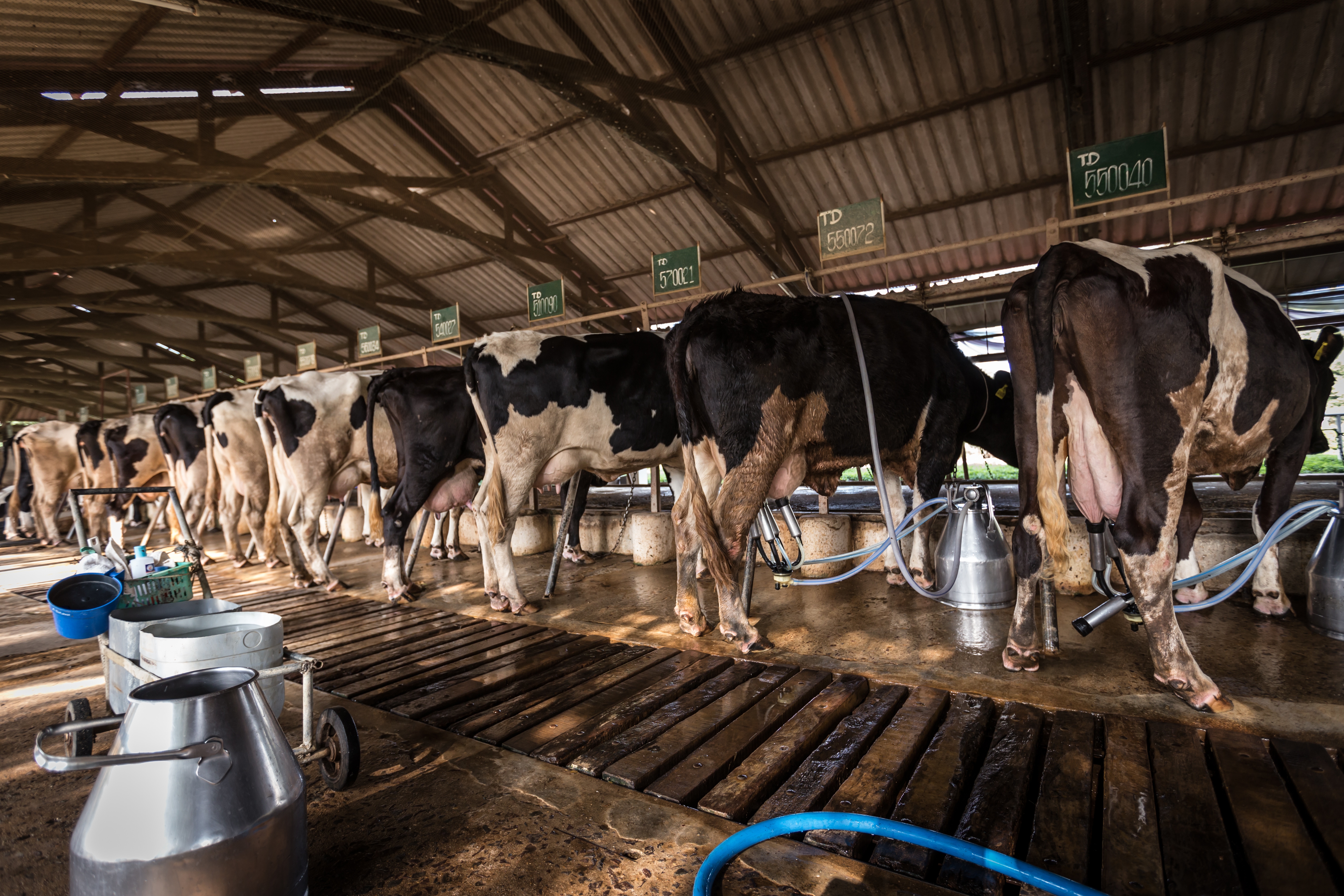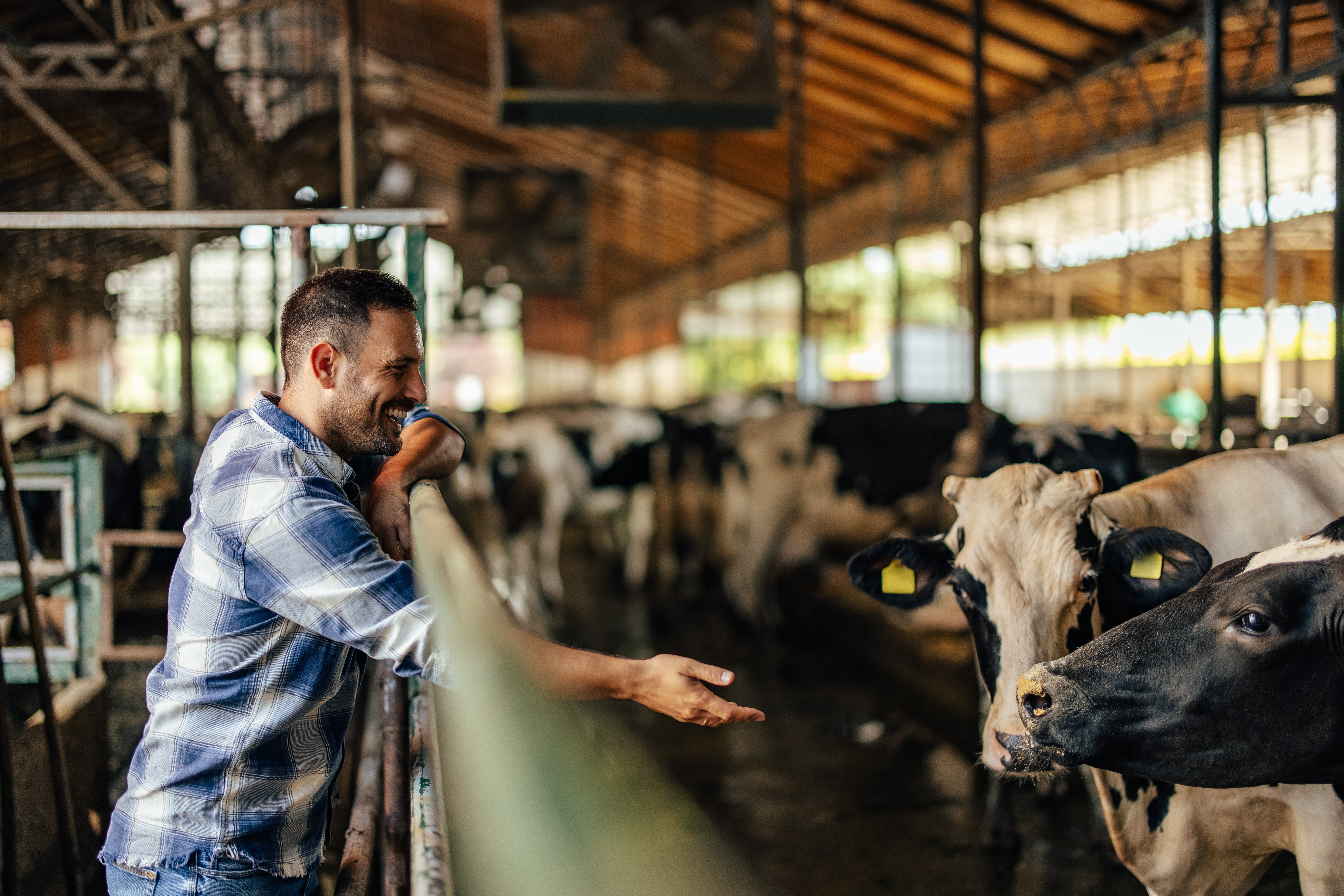Topics: SUSTAINABILITY
NutriPRO™ Ingredients: Enhancing Health, Wellbeing, and Performance
Posted by Lindsey Ormond, Director of Research & Development on Feb 17, 2023 5:03:29 PM
As a leader of dairy ingredient innovation, Milk Specialties Global is constantly developing and improving their product range to benefit both our customers and the consumer. Whether it be to improve processing, sensory characteristics, or bringing new health benefits to the market, the launch of our NutriPRO range is a prime example of the team’s relentless pursuit of innovative, tailored solutions to satisfy consumer desires and trends.
Read MoreTopics: HUMAN NUTRITION
Enhancing Weight Management with Whey Protein and Alpha-lactalbumin
Posted by Lindsey Ormond, Director of Research & Development on Dec 20, 2022 3:46:04 PM
Topics: HUMAN NUTRITION
Maximizing Recovery & Performance With Hydrolyzed Whey Protein
Posted by Lindsey Ormond on Oct 24, 2022 10:36:53 AM
Every day, athletes of all levels are pushing their bodies in pursuit of their goals, be it to become faster, stronger, bulkier, leaner, or healthier. Regular training, particularly that which induces muscle damage and depletes the body’s energy stores, stimulates adaptations that make the muscles stronger and more efficient in future. But training is only one part of the equation; nutrition is key to maximizing these adaptations, enhancing muscle recovery, and optimising muscle condition.
Read MoreTopics: SUSTAINABILITY
Supporting women’s health is crucial, as women go through many unique stages of the life cycle that must be cared for properly. These different life stages include puberty, pregnancy, and of course aging. Nutrition is one of the best controllable ways to support women’s health. Consuming a diet high in quality protein is crucial as protein helps with growth and development of the body. Whey protein, one of the protein fractions of cow’s milk, is a high-quality source of protein that can easily be supplemented in a women’s diet. Some of these benefits include building lean body mass and bone mineral density, weight loss and satiety, and managing blood glucose levels and blood pressure. Creating healthy nutritional habits can help women as they age when certain diseases may become more prevalent and adding whey protein into a women’s diet might be exactly what they need to support their health and fitness goals.
Read MoreTHE THREE GOLDEN RULES FOR YOUR HERD'S ENERGY BANK
Posted by Dr. Jim Lofton on Sep 18, 2022 6:35:36 PM
In today’s challenging economic situation for dairy producers, critical economic decisions will be made in a number of areas—including feeding programs. At the January 2009 Illinois Dairy Days program, three Golden Rules for dairy production were discussed for those who intend to stay in business. These rules are:
Each of these rules is quite dependent on the energy status of cows. Think of cows as an “energy bank”. They take energy in and use it in various ways, which then determines what the returns for this energy investment will be. Cows do not make the rules for how they use energy, but there are some common principles they follow.
First, energy is required for body maintenance. If energy is not adequate, cows will deteriorate, not produce milk well, and will deplete their own body condition. Their health will be compromised. Then, if they survive, it will take time for them to fully recover, which also takes energy over time.
Second, this energy “currency” is somewhat interchangeable and convertible. If cows need more energy for milk production than they are able to consume, either milk production decreases or body condition is lost. However, there is a minimum balance requirement for this body condition energy bank. If cows have poor body condition, they may not be able to
convert remaining body condition to maintain milk production. In that case, milk production will decrease because staying alive has a higher priority than milk production. Likewise, reproduction may suffer when the energy bank account is low. Also, the higher the milk fat and
protein, the more energy is required from the bank to produce these levels.
That leads to the question of how to best maintain this energy bank. Particularly in earlier lactation, cows cannot eat enough to meet their energy requirements for milk production. Thus, they make withdrawals from their energy bank to provide for milk production. As officers of the cows’ energy bank, we need to do things to minimize how much and how long cows make withdrawals
The most valuable currency to deposit in the cows’ energy bank is dietary fat because it has 2.25 times more energy than protein and carbohydrate. As Mike Hutjens recently stated, “Aspects that could be economically wrong decisions include removing fat and oil sources...”1
What about fat decreasing dry matter intake (DMI)? That depends on the fat source. There are three primary categories of fat that can be “deposited in the energy bank”: triglycerides (tallow and oils), saturated free fatty acids (such as Energy Booster 100®), and calcium soaps of fatty acids (CSFA).
Cows do not like greasiness from liquid tallow or oil. Cows also decrease DMI related to dietary unsaturated fatty acid (UFA) sources. When UFAs from CSFA escape ruminal biohydrogenation, it results in release of more cholecystokinin (CCK) in the small intestine, which decreases rumination and DMI.2, 3 In fact, the 2001 Dairy NRC on page 31 makes it clear: “Calcium salts of FAs decreased dry matter intake by 2.5 percent for each percentage unit in the diet above control.... Added hydrogenated FAs and tri-glyceride did not decrease dry matter intake.”4 Ruminal biohydrogenation of UFA also produces low levels of trans-10, cis-12 C18:2, which is a potent milk fat depressant.
Don’t let cows suffer from excessive energy withdrawals! Invest in a fat source that does not reduce intake, helps increase milk production and maintain milk components—invest in Energy Booster 100.
Topics: ANIMAL NUTRITION
The prevalence of diabetes in 2019 was estimated to be over 9% of the global population, with projections that this will rise to over 10% by 2030 and almost 11% by 2045. These figures are also reflected in those with impaired glucose tolerance, at an estimated 7.5% of the global population and growth rates anticipated around the same (Saeedi et al, 2019).
Read MorePalmitic and Stearic Acids: Maintaining Milk Fluidity
Posted by Dr. Jim Lofton on Aug 3, 2022 11:31:19 AM
The recent interest in feeding highly concentrated palmitic acid (C16:0) to lactating dairy cows for the purpose of improving milk fat test and yield has caused researchers and consultants alike to search for information to aid in making informed decisions on long chain fatty acid (LCFA) supplementation. The mammary gland is constantly combining fatty acids (FA) of different melting points to maintain milk fluidity. The melting point of C16:0, stearic acid (C18:0), and oleic acid (C18:1) is 145° F, 157° F, and 56° F respectively. The cows’ normal body temperature is 101.5° F. 200 When the mammary gland is presented with plasma triglycerides (TG) rich 150 in C16:0, the tissue blends lower melting point FA in the sn-3 position on 100 the TG which is preferentially reserved for these FA as shown in Table 1.
Table 1. The molar % of milk fatty acids at the 3 different positions on the milk fat TG and their corresponding melting points. Adapted from Jenson, 2000.
C16:0 at high levels of intake pose a problem for the cow with respect to milk FA content. As observed in the 7 recent production trials, only 15-20% of the added C16:0 intake is incorporated into milk fat. There appears to be a mechanism in place that limits the amount of C16:0 and other high melting point FA in milk fat. Timmon and Patton 1988 reported in their landmark publication regarding milk fluidity that the small differences in milk FA, consistently detected, seem important for a number of reasons. It is notable that the fatty acids involved are crucial to the liquidity of milk fat. It is a liquid at body temperature presumably of necessity for its synthesis and secretion by the lactating cell, as well as for efficient utilization by the offspring. The principal means of assuring this liquidity is the incorporation of C18:1 (mp 56 F), which is produced from C18:0 (mp 157 F) in bovine mammary tissue, and of short chain FA (C4:0-C10:0, mp -17 to +89 F) into TGs destined for milk fat globules. The conversion of C18:0 to C18:1 in lactating bovine tissue is accomplished by the microsomal enzyme, stearyl-CoA desaturase. It is evident that the membrane fluidity-desaturase activity relationship could provide a basic control mechanism for maintaining liquidity of accumulating fat droplets.
Figure 1. Relative incorporation of acetate by exogenous fatty acids in mammary tissue in uM. Adapted from Hansen and Knudsen 1987
Figure 1 illustrates the stimulatory effects that palmitic and lauric acids have on denovo synthesis as measured by acetate incorporation into milk TGs. These researchers washed mammary tissue on any FA and added different FA to determine their effect on denovo synthesis. The highest melting point FA are causing increased denovo synthesis activity to accommodate need to combine lower melting point FA into milk fat TGs to maintain milk fluidity.
The composition of a LCFA supplementation appears to be very important to milk fat production and its FA composition. LCFA supplements high in C16:0 will require either adequate small and medium chain FA from denovo synthesis to balance the fluidity, or adequate C18:0 that can be readily converted into C18:1 for that purpose. In the presence of milk fat depressing situations that severely limit the small and medium chain low melting point FA availability, more C16:0 will aggravate the situation since it will be limited for use in milk fat synthesis. A balance of C16:0 and C18:0 at or near a 1:1 ratio will be superior in maximizing milk fat production.
References:
Loften, J. R. et al., 2014. Palmitic and Stearic Acid Utilization and Metabolism in Lactating Dairy Cows. J Dairy Sci 97
Timmen, H., and S. Patton. 1988. Milk Fat Globules: Fatty Acid Composition, Size and in vivo Regulation of Fat Liquidity. Lipids. Vol. 23. No. 7. 685-689
Jensen, R. G., 2002. The composition of bovine milk lipids: January 1995 to December 2000. J Dairy Sci. 85:295-350.
Hansen, H. O., and J. Knudsen. 1987. Effect of exogenous long-chain fatty acids on individual fatty acid synthesis by dispersed ruminant mammary gland cells. J. Dairy Sci. 70:1350-1354.
CASEIN: THE SLOW PROTEIN FOR OVERNIGHT RECOVERY AND MUSCLE SUPPORT
Posted by Lindsey Ormond, Director of Research & Development on Jul 21, 2022 6:47:30 PM
Casein makes up 80% of the protein in milk (whey being the other 20%) and has gained more attention in recent years for its nutritional and functional benefits.
Read More









